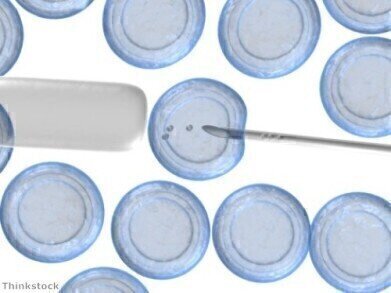-
 Photos could aid genetic disorder diagnoses
Photos could aid genetic disorder diagnoses
News
Photos could aid genetic disorder diagnoses
Jun 24 2014
People suffering from rare genetic disorders could soon be diagnosed simply by having their photos analysed, after researchers at Oxford University disclosed the results of a new study.
According to research published in the journal eLife, experts have come up with a computer programme that is capable of recognising facial features in photographs.
Using this tool, it then looks for similarities with facial structures for various conditions, such as Down's syndrome, Angelman syndrome, or Progeria; and returns possible matches ranked by likelihood.
The algorithm is also capable of learning what facial features to pay attention to and what to ignore from a growing bank of photographs of people diagnosed with different syndromes, to make eventual diagnoses more accurate and reduce the margin for error.
Although each of these genetic disorders is individually rare, collectively they affect one person in 17, with a third having symptoms that greatly reduce quality of life.
Despite this, the majority of people fail to receive a genetic diagnosis - something that can be a very important step, according to lead researcher Dr Christoffer Nellaker, from the University of Oxford's MRC Functional Genomics Unit.
"It can provide parents with some certainty and help with genetic counselling on risks for other children or how likely a condition is to be passed on," he explained.
"A diagnosis can also improve estimates of how the disease might progress, or show which symptoms are caused by the genetic disorder and which are caused by other clinical issues that can be treated."
During the study, the researchers worked on the basis that around 35 per cent of rare genetic disorders involve some kind of change in the face and skull, usually as so many genes are involved in development of the face and cranium as a baby grows in the womb.
As such, the experts sought to teach a computer to carry out some of the same assessments objectively, rather than the usual lengthy process of requiring clinical geneticists to come to a conclusion based on facial features, follow-up tests and their own expertise.
The final algorithm is aware when patients share the same condition, and automatically clusters them together, though it is more effective at suggesting a diagnosis for a photo where it has previously seen many other images of people with the same syndrome.
This learning process and objective approach could help narrow possible diagnoses, making comparisons easier and allowing doctors to come to a conclusion with more certainty, Dr Nellaker elaborated.
He concluded: "A doctor should in future, anywhere in the world, be able to take a smartphone picture of a patient and run the computer analysis to quickly find out which genetic disorder the person might have."
Digital Edition
Lab Asia Dec 2025
December 2025
Chromatography Articles- Cutting-edge sample preparation tools help laboratories to stay ahead of the curveMass Spectrometry & Spectroscopy Articles- Unlocking the complexity of metabolomics: Pushi...
View all digital editions
Events
Jan 21 2026 Tokyo, Japan
Jan 28 2026 Tokyo, Japan
Jan 29 2026 New Delhi, India
Feb 07 2026 Boston, MA, USA
Asia Pharma Expo/Asia Lab Expo
Feb 12 2026 Dhaka, Bangladesh


















